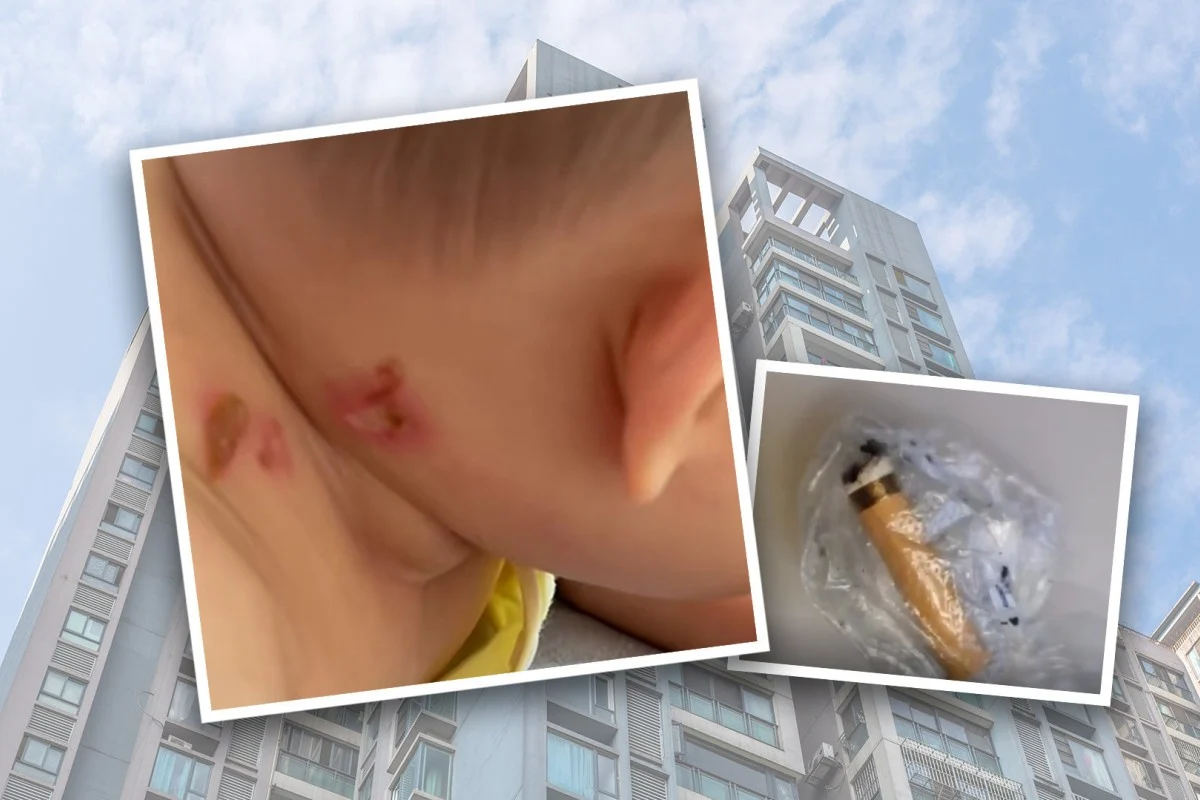In an alarming incident in Zhengzhou, the capital city of China’s central Henan province, a carelessly discarded cigarette butt from a tall building resulted in a grievous injury to a four-month-old infant. The police, leveraging DNA testing, were able to pinpoint the culprit.
As recounted by the infant’s mother, Huang, she was walking near the building with her daughter when the still-lit cigarette butt landed on the baby’s neck. The unexpected pain caused the baby to instinctively tighten her neck into her shoulders, gripping the smouldering cigarette between her neck and shoulder. Huang struggled to remove the hot object, stating, “Since it was very hot, my daughter withdrew her neck in a conditioned reflex. So the cigarette butt was tightly gripped between her neck and her shoulder.” When she finally managed to separate the baby’s neck and shoulder, the remnants of the cigarette were still burning.
The traumatic incident left the baby in intense pain, with tears continually streaming down her face. Due to the severity of the wound, which began to fester, Huang had to seek medical attention for her daughter.
Recognizing the potential gravity of the offense, the mother handed over the cigarette butt to local law enforcement. The police then embarked on an extensive DNA testing initiative involving every resident of the building. Their diligence bore fruit when they identified a match with the fingerprints on the cigarette butt, leading them to a suspect. While the individual’s identity remains undisclosed, legal repercussions await them.
Zhang Jincan, a legal expert from Henan Lingying Law Firm, mentioned that the perpetrator would be mandated to compensate for the baby’s injuries. In addition, they might face charges for dropping an object from a significant height, a crime that can entail a jail sentence of up to a year.
The baby’s distressing experience elicited a wave of sympathy and outrage on mainland social media platforms. One user commented on the visceral impact of the incident, saying, “The heartbreaking cries tore at everyone’s heart.” Another added, “This kind of person lacks morals. They know this behavior could cause bad results but carry on regardless.”
Such stories spotlight the increasing adoption and efficacy of DNA technology in China’s law enforcement procedures. For instance, in June, police in Jilin province utilized DNA testing to track down an alleged murderer connected to a cold case from 22 years ago in northern China’s Inner Mongolia. Another case from 2016, shortly after Inner Mongolia integrated the technology, unraveled the mysterious death of a woman who consumed tampered meat. DNA samples revealed her brother’s involvement, who intended to use the contaminated pork to poison livestock and rob his neighbors.
These episodes collectively emphasize not only the grave consequences of thoughtless actions but also China’s progressive stride towards utilizing technology in ensuring justice. As forensic advancements like DNA testing become more pervasive, it augments the capabilities of law enforcement, aiding in the swift resolution of cases and serving as a deterrent for potential offenders.
READ MORE:
